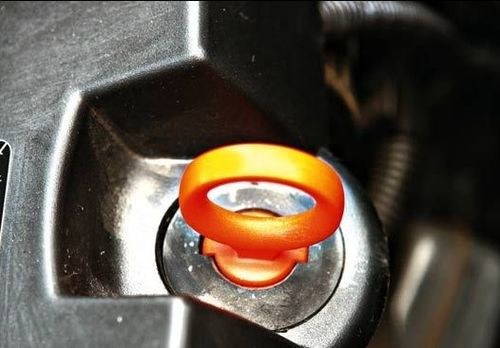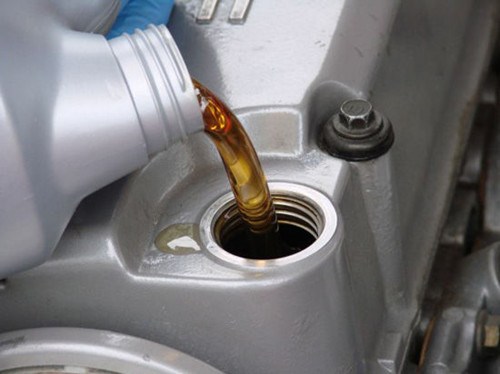When consumers purchase used cars, they have a comprehensive understanding of the condition of the vehicle. When selecting, they can carefully observe the situation of the lubricant. If there is a problem with the lubricant, it may require overhaul. 1, check the oil cover Unscrew the filler cap and turn it upside down to observe the bottom. This can be seen at the bottom of the filler cap, traces of old or even dirty oil. If the bottom of the fuel filler cap is covered with a dark emulsion with a thick consistency, and there are small droplets mixed with oil, this is an abnormal situation. The cylinder pad, cylinder head or cylinder block may be damaged, causing coolant to penetrate. Caused by lubricating oil. If this happens, contaminated lubricants can cause damage to the interior of the engine and require major repairs.  2, check the amount of lubricant If there is no problem with the fuel filler cap, after finding the lubricant meter, pull it out and check the oil level first. The oil level should be at “full†or “FULL†position. If the oil level is too low, the engine will be damaged due to poor lubrication, and the valve, cylinder pad, and piston ring will be damaged. Observe whether there is leakage of lubricant on the floor of the car. If conditions permit, the cylinder pressure can be detected to see if there is a leak and the engine components are damaged.  3, through the exhaust inspection If the exhaust gas is blue smoke, indicating that the valve oil seal fails, the lubricating oil enters the cylinder combustion chamber; it may also be due to a large gap between the piston ring and the cylinder wall or a broken piston ring; or due to the aging of the engine oil seals and seals. And damage, causing leakage of lubricants, excessive consumption of lubricants.  4, Lubricant color You can take out a paper towel, pull a grease meter and wipe it on paper to observe the luster and impurities of the lubricant. Qualified, qualified lubricants are generally homogeneous, transparent, viscous liquids. High-viscosity lubricating oils are slightly darker in color, and multi-grade oils feel less viscous than single-stage oils at room temperature. If oils are dark and turbid, they can be regarded as inferior lubricating oils. If the oil product is agitated and a large amount of air bubbles appear and it does not disappear within 15 minutes, it is regarded as a failure lubricant. The lubricating oil will oxidize and degenerate during use, and the metal abrasive grains generated by the wear of the parts will cause the impurities in the air to enter the fuel tank and the incomplete combustion of the fuel products to enter the oil, resulting in deepening of the color, which is a normal phenomenon. Due to the carbon deposits and sludge in the cleaning system, the oil product turns black after 1000-2000 km, which is also a normal phenomenon. It is abnormal if other colors appear. If the color of the lubricating oil is found to be grayed out, whitened or emulsified, it means that the lubricating oil is mixed with water. If this happens, focus on checking the vehicle. It may be the following four conditions: 1. The emulsification of engine oil caused by the influx of oil in the engine oil will result in poor lubrication and increase in the amount of oil sludge generated. It will also cause engine corrosion, and it will cause serious accidents of holding the tiles. 2. The inside of the engine leaks, causing the engine coolant to mix with the engine oil containing oil in the engine oil. 3. The engine crankshaft seal is not good, leading to water. 4. The engine temperature is low, and the moisture in the combustion exhaust gas enters the engine oil, which cannot be vaporized in time and accumulates in the engine oil.
Insulating glass machines are special machines for manufacturing insulated glass. Insulated glass is a combination of two or more sheets of glass spaced apart with a spacer bar and hermetically sealed with a primary and secondary sealant to form a single unit with one or more air or inert gas spaces in between, with benefits of energy saving, sound insulation, reduced infiltration, and reduced condensation. The major manufacturing process for insulated glass includes glass cutting, glass edging, glass washing and drying, spacer assembly, pressing, sealing, and gas filling. Insulating glass machine mainly includes vertical insulating glass production line, glass cutting machine, glass washing and drying machine, glass edging machine, butyl extruder, two-component sealant extruding machine, gas filling machine, and so on.
insulating glass machine, insulated glass machine, double glazing machine, insulating glass making machine, double glass machinery Jinan Stone Machine Co., Ltd. , https://www.jnstonema.com

